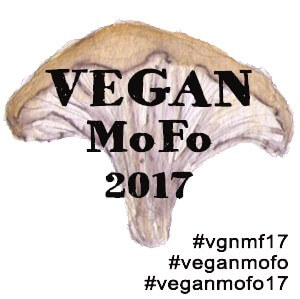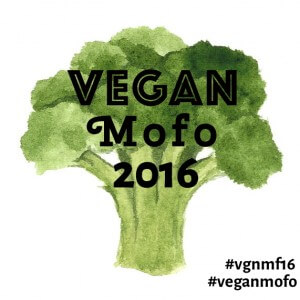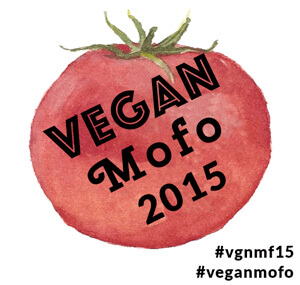
Shop on Amazon or Barnes and Noble
After reading Jenny Marie’s cook-a-long monthly challenge, I thought it would be fun to share some posts reviewing the book as well. If you have a blog with a review (specifically of the recipes), leave a comment and I will add you to the list.
This month I reviewed The Great Vegan Grains Book. I got it for Christmas this year, and I have been wanting this book for quite sometime. I wanted to know more about various different grains, and get more comfortable cooking with them in the kitchen. So let’s jump into the review!
Photos
Not every recipe has a photograph and that is okay. There is enough to sustain interest, all are beautiful and very inviting. They do a great job making the photos different enough from each other, especially when many of the dishes are pilafs, grain salads, etc. Almost all are in bowls, you know? They also make sure they take photos of dishes that need a photo- like polentas, balls, etc so that the reader understand what the dish is and should look like to prevent confusion.
Set-up
This has the classic layout of modern cookbooks, a short introduction then the recipes with some random staples in the back. The staples in the back were favorites from other cookbooks from the authors. I didn’t make any of these, but they looked good. The different recipe categories are Eye-Opening Grains (Breakfast), Grains Mains for All Appetites (Entrees), Super Side It with Grains (Side Dishes), and finally Great Grains Soups and Salads (Soups and Salads.)
Some of the recipes I felt like they could of bounced in and out of the various categories. I guess maybe the “side dishes” were best described as dishes you would serve with something else, not putting into a box of “grains” “vegetable” or “protein” category.
Writing
The writing style was good, but not particularly interesting. Oof… that sounds so much harsher than what I intend it to. I think the focus of the writers are the recipes, not on their writing style. And I think that is fine and good especially since people usually just go ahead and cook.
BUT…. I have a major complaint, think this book needs more writing! Simply put I remember seeing in Susan’s review that she didn’t seem to know (at the time) what einkorn was. Well, I feel like the authors could of done something better to try and make it more clear what each grain was. I get that if you don’t read the beginning it doesn’t make too much of a difference, but I have some ideas of how to make the differences more apparent. I think pointing out these differences are super important. Especially with corn. Yup, the authors don’t know much about corn, cause they give a recipe for grits, and it isn’t definitely not grits. Pretty much grits are of a finer consistency, and they are made from hominy (lime-treated corn) making it easier to digest. Although it is a subtle difference, I think it should be noted- especially since there are so many different wheat products listed in this book. No distinction of all the different rice varieties either, which there are many that can confuse a newbie.
Overview
Lately I feel like I’ve been slamming recipe books. So I will start with the good part about this book- the recipes rock! For a book about whole grains, these recipes are really simple and easy to make. At first I scoffed at the recipes as they called for already cooked grains most of the time, but I find that it made the dinners faster to cook. Just cook the grain over the weekend and freeze, or cook in the morning before work, storing it in the fridge. Then it is all super fast cooking for dinner. With the exception of the Berbere Kamut, I think everything was pretty easy, and not too time consuming. I think the authors REALLY got creative on ways to use up grains, and they were really thoughtful about cultural appropriation but still having a wide range of different ethnic foods to feature. I wasn’t wowed by the first recipe- the chickpea curry millet, but everything else has been great in the flavor department. I can see why Tamasin Noyes and Celine Steen have so many books under their belt.
But I have to be truthful- I am VERY disappointed with this book. One, as mentioned, is that there is too much wheat in this book. I have nothing against wheat. I think it can be great. But half of the recipes I made use wheat, and boy did I gravitate to those recipes. I had to really try and seek the non-wheat recipes. Part of the reason why I picked up this book is that I wanted to variate my grains, and in western society, wheat is the most common option. I am also sure that MANY people are trying to do gluten free by picking up this book, and this quickly narrow down the options.
My second biggest complaint is because of the title. If you are naming your book the “great grains book” I expect it to be BIGGER! If the book was just “The Vegan Whole Grains Cookbook” I would of been fine, but “GREAT grains BOOK” it implies a massive selection, and the lacking of “cook” from “book” suggests there will be lots of information. I know this seems a little critical, but I think this is what I wanted and expected in this cookbook, and it clearly fell short. Maybe I am a little nerdy and outdated with cookbook expectations, but I feel like they have completely stopped providing detailed information. If I did this cookbook I would of divided it by grain, giving instructions on how plainly cook the grain, provide information of the different variations, and give a few recipes. Then maybe there would be a chapter at the end with “mixed grain” recipes. Would some chapters be longer than others? Yeah, and that would be fine.
So did this book live up to my expectations? Mostly nope. I am a little bit more comfortable in the kitchen with certain grains, mostly wheat groats. Not so much the other stuff. Oh well. But I am still very happy to have this book because the recipes ARE good. And there are more recipes I want to try out in the future. I wouldn’t want to pay the retail suggested price of $23, but the lower Amazon and Barnes and Noble for $12-17 seems to be a perfect price in my opinion. So I recommend this book, just don’t expect an encyclopedia like I did.














